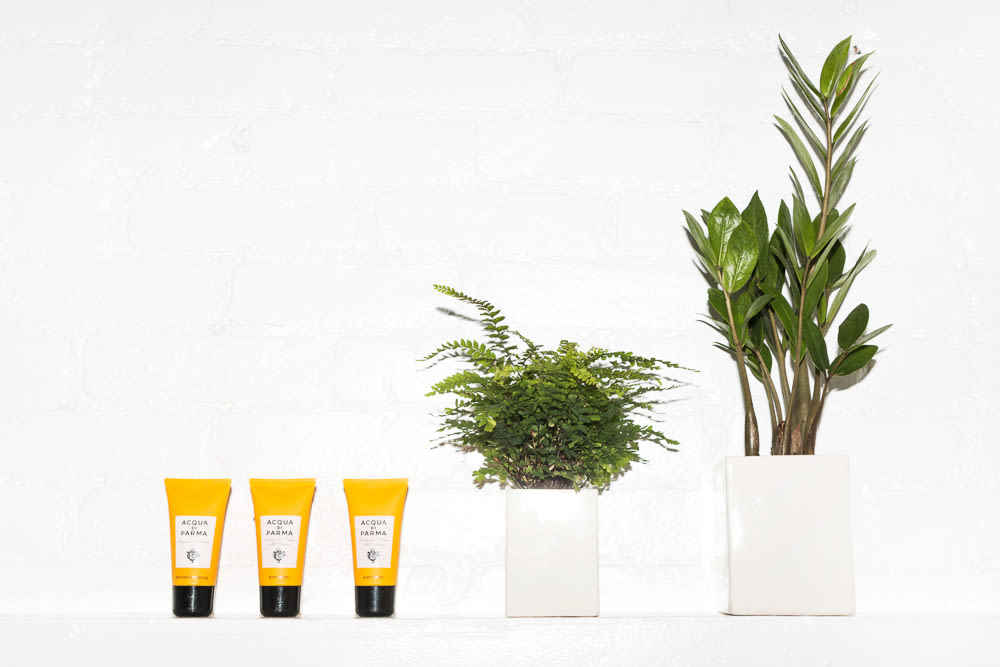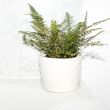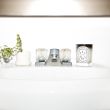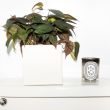About a year ago, I was working at a creative agency in a role that wasn’t meant to be. During that time, I questioned a lot of things as one does and started dabbling in other endeavors like ceramics and botany. I ended up interning once a week for a florist where I found being around nature—though it was in a limited capacity—was extremely therapeutic. Tending, caring, and creating something that existed because it was simply beautiful felt more than was expressible. Plants take work and each have individual needs. But within your space, they really do make a house a home. Extrapolating on that, I figured, they must make a bathroom...a better bathroom, as well. So I emailed Erin Marino from The Sill to advise on what could live in the sporadically humid space. Here's what she sent me:
“When you think of most bathrooms in New York City, you think low light, high humidity, and warm temperatures. So if you’re a houseplant novice, think of this space as a helping hand. Additionally, plants have been shown to boost moods, increase creativity, filter indoor air toxins, and produce oxygen…all are great reasons to invest in some houseplants. Luckily, there are a number of common species that thrive in the typically tropical conditions a bathroom provides. Put a few on the counter, squint a little, and ta-da! You’re at the spa.
The most important thing to consider when browsing tropical plant options at your local plant shop or nursery is how much sunlight your bathroom receives. Because most apartment bathrooms receive minimal light, most of our suggestions are plants that tolerate moderate or low light. The plants with an asterisk next to them are our tried-and-true favorites that somehow thrive in small, dark, city apartments.
If you lucked out and have a bright and sunny bathroom, the low light recommendations will still work for you, as long as they’re not in the direct line of sunlight. If there’s no escaping the sun in your bathroom, opt for some humidity-tolerant succulents like an aloe plant.
Plant Recommendations For The Bathroom
- Snake Plant *
- Philodendron *
- Spider Plant
- ZZ Plant *
- Orchid
- Pothos *
- Peace Lily
- Bamboo
- Assorted Ferns (Boston, Asparagus, Staghorn, Bird’s Nest)
- Cast Iron Plant
- Air Plants
Plants, like people, are individuals. There’s no general rule of thumb for watering them. We recommend checking on your plant every few days for the first month or two. Get to know it and develop a sense of when it’s thirsty. If when you check on your plant, the soil is moist, wait to water it. If it’s bone dry, give it a good watering.
That being said, overwatering is still the easiest way to kill a plant. If you’re a novice with watering, pick planters with drainage holes and saucers. That way water won’t sit in the bottom of your plant, which could lead to root rot.
If you can, purchase from a reputable source. Your local nursery or plant shop will typically be run by individuals that know a thing or two about plants. Ask them questions. Explain your space to them (i.e. how much light it receives, what your schedule is like, if you have any pets, etc.)—if they’re anything like the team at our shop, they will be thrilled to help you pick the perfect plant or two.
If you’re stuck plant shopping at the grocery store, hardware store, or department store, do some research ahead of time. There’s tons of wonderful sources on the web dedicated to houseplants. We’re partial to our own blog, The Plant Hunter, but also regularly read Houseplant Guru, The Horticult, Urban Jungle Bloggers, and Gardenista.
But most important of all, be easy on yourself! If you bring a plant home and it dies, it definitely doesn’t mean you are doomed and have a black thumb. Getting comfortable caring for houseplants is a learning experience. Enjoy it.”
—Connie Tsang
Photographed by Tom Newton. Ten apartment-appropriate plants for tiny spaces and those decidedly not green of thumb.








